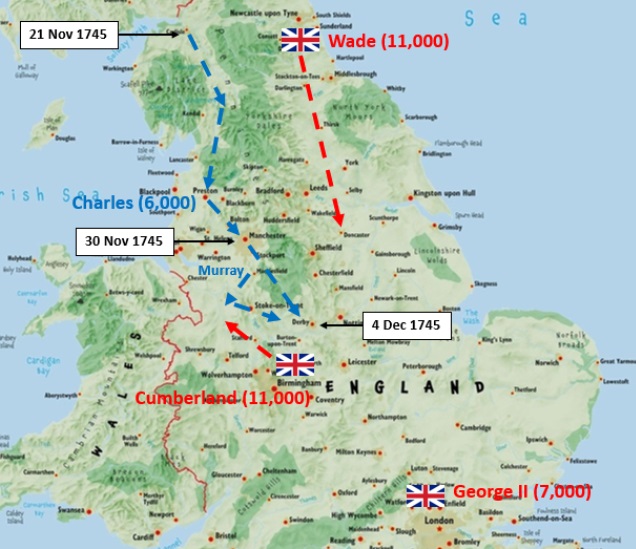In Part 1, I described the background to my modelling of some Jacobite Boats, as used in their successful amphibious assault at Dornoch Firth on 20th March 1746. The first Jacobite boat I completed was shown in Part 1 and is shown again below.

In Part 1, I described the background to my modelling of some Jacobite Boats, as used in their successful amphibious assault at Dornoch Firth on 20th March 1746. The first Jacobite boat I completed was shown in Part 1 and is shown again below.

I had previously modelled a pair of Royal Navy boats, which were used by 27th Foot (Inniskillings) and a Naval Landing Party, as part of a joint operation with a pair of small Royal Navy Brigs, in their unsuccessful attempt to prevent the Jacobites ferrying their siege guns across the Forth to help besiege Stirling Castle. These can be seem here and a photo of these boats is below.

However the largest amphibious operation of the ’45 was not British but Jacobite and, unlike the British one, it was entirely successful. I wanted the model the boats for this.
Continue readingI decided to model the Battle of Clifton (or as some would call it the Skirmish of Clifton). To set the scene, I will start with some slides from my PowerPoint talk on “The 45” which should be finished later this year, and I will give to raise funds for the British Military Charity “Combat Stress”.
In November 1745 the Jacobites marched into England, down the West coast through Carlisle and moving too fast to be caught by Wade’s Northern Army on the East coast. Their intention was to head for London and they expected English Jacobites to join them. A few did in Manchester, but in insignificant numbers. Cumberland’s Midlands Army was positioned to block them just North of Coventry, but Lord George Murray took some of his force on a diversionary move towards Wales, where there was some Jacobite support. Cumberland marched towards Wales, but Murray swung back to rejoin the main Jacobite Army.

The Battle of Inverurie took place on 23rd December 1745. Some accounts would call it a Combat, rather than a Battle, but the effect was the same. It was the second battle on that site, since there was an earlier one in 1308. My model of the battlefield is shown below.

Minor raids were a feature of the Highland way of life, so I decided to model three of these which took place during the Jacobite Rebellion.

The first of these was against Culloden House in October 1745. Today Culloden House is a hotel and here is an old postcard of it.
Having captured both Fort George at Inverness and Fort Augustus, at the southern end of Loch Ness, the Jacobites moved on to the third Fort in the chain down the “Great Glen” formed by Loch Ness, Loch Lochy and Loch Linnhe. This was Fort William, which although constructed in a Vauban style was of a very irregular shape due to its position on the junction of Loch Linnhe and the River Nevis, as shown below.

In my last post I described how the Jacobites captured Fort George at Inverness in February 1746. They then moved south to besiege Fort Augustus, which was at the southern end of Loch Ness. This was a “modern” Vauban style fortress, with four bastions, but it suffered from a couple of fundamental flaws in its design. Here is an old print of it.

The “modern” Fort George is a Vauban style fortification to the north of Inverness, but this was built after the Jacobite Rebellion. In 1746, Fort George was the name given to the old medieval castle guarding the bridge to the south of Inverness. I decided I needed a Medieval castle to represent this, and explained how I created it in my last post.
The castle reverted to its original name of Inverness Castle after the Jacobite Rebellion and was considerably expanded in the 19th Century. However I found an old print of it in 1746 and realised that at that time it was mainly a keep plus curtain walls extending out along the banks of the River Ness towards the town.

All of the 19th Century extensions were built on the ground in front of the castle from this view.
I have decided to model the various forts which played a part in the Jacobite Rebellion. The first of these is Ruthven Barracks, which is in the Cairngorms, strategically placed to control the road from Perth towards either towards Inverness or Fort Augustus. Today the barracks looks like this:
